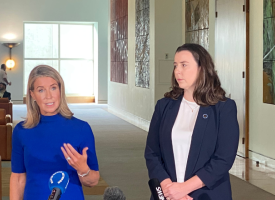Health financing
Federal Budget Submission 2012-13: Health financing
The Australian health system is a balance between the public and private sectors.
Under Medicare, the Government subsidises private medical services to ensure that they remain affordable for patients.
The private hospital sector now performs 40 per cent of all admissions and 64 per cent of elective surgery in Australia. It is a key part of Medicare and the public hospital system could not survive without it.
Government subsidies for private health insurance premiums and the Extended Medicare Safety Net (EMSN) alleviate the financial pressure faced by many Australians in accessing private hospital treatment and private medical services in the community.
Most out-of-hospital medical services are provided by private medical practitioners and Medicare rebates assist patients with the costs of these services. The real value of Medicare rebates for patients has not kept pace with the increasing cost of running medical practices because successive Governments have failed to index the Medicare schedule fees in line with other indices such as CPI and average weekly earnings.
Instead of increasing Medicare rebates, the EMSN was introduced to assist patients with high out-of-pocket costs for medical services provided out of hospital. The EMSN structure helps share these costs between patients and the Government.
In the year to September 2011, the Labour Price Index increased by 3.77 per cent and the CPI by 3.28 per cent. In contrast, some MBS items were indexed by a very modest 2 per cent and rebates for services provided by non-vocationally registered GPs, and pathology and diagnostic imaging items have not been indexed at all for 12 years.
In addition, the Government has made the following cuts to Medicare rebates since taking office in 2007:
| 1 July 2009 | Pathology Saving: $4.1 million over 4 years |
| 1 November 2009 | Joint injections, coronary angiography and cataract surgery Saving: $70.4 million over 5 years |
| 1 May 2010 | Restructuring health assessment and case conferencing items Saving: $15.5 million over 5 years |
| 1 November 2011 | Better Access Program GP mental health services Saving: $405.9 million over 5 years |
Consequently, out-of-pocket costs for patients continue to increase.
In 2009, the Government shifted more of the burden of the costs onto patients by introducing a cap on the total EMSN benefits paid for some medical services.
The savings from capping EMSN benefits have far exceeded the Government’s estimates of $262.3m over the three-year period from July 2009 to June 2012. A report by the Centre for Health and Economic Research and Evaluation (CHERE) released in June 2011 shows that the Government saved $226.8m in 2010 alone.
The Government has shifted nearly $227 million in costs to patients in 2010.
But, more importantly, the caps may be shifting services away from the private sector. The CHERE report says that the number of private obstetric confinements fell by 4 per cent, with the biggest falls occurring in the latter part of 2010.
Access to private out-of-hospital medical services in the community must remain affordable so that patients can seek early medical attention. As well as being detrimental to patients’ health, delayed diagnosis and treatment will simply add to the cost of other parts of the health system.
Practice costs, including employing practice staff and operating expenses such as rent, electricity, computers and professional indemnity insurance, must all be met from the fee charged by the medical practitioner.
Though 80 per cent of GP services are bulk billed, there is cross subsidising by patients who incur a gap, and their gap is increasing. Only 27.2 per cent of specialist consultations are bulk billed, and for patients who are not bulk billed the average out-of-pocket cost is $49. Patient out-of-pocket costs for pathology and diagnostic imaging services are also rising.
Poor or no MBS indexation, cuts to existing rebates such as GP Mental Health Services, and caps on ESMN benefits by the Government simply shift costs to patients and make medical services less accessible.
AMA POSITION
Extended Medicare Safety Net
The current EMSN must be maintained with appropriate indexation of the safety net benefits payable. There must be no further caps introduced without a proper review of the likely impact on patient out-of-pocket costs.
The existing cap amounts must be adjusted to reflect the original projected savings.
Appropriate indexation of the MBS
MBS indexation must be on par with increases in the Labour Price Index and the CPI so that indexation reflects the real increases in the cost of providing medical services and running medical practices. This will ensure that the Government provides appropriate financial assistance to patients to maintain affordability of medical services provided outside the hospital setting.
MBS indexation must be applied to all medical services on the MBS, including pathology and diagnostic imaging services.



